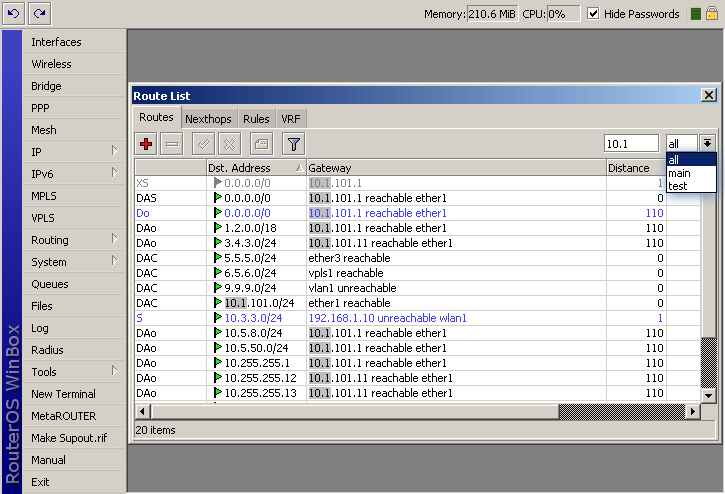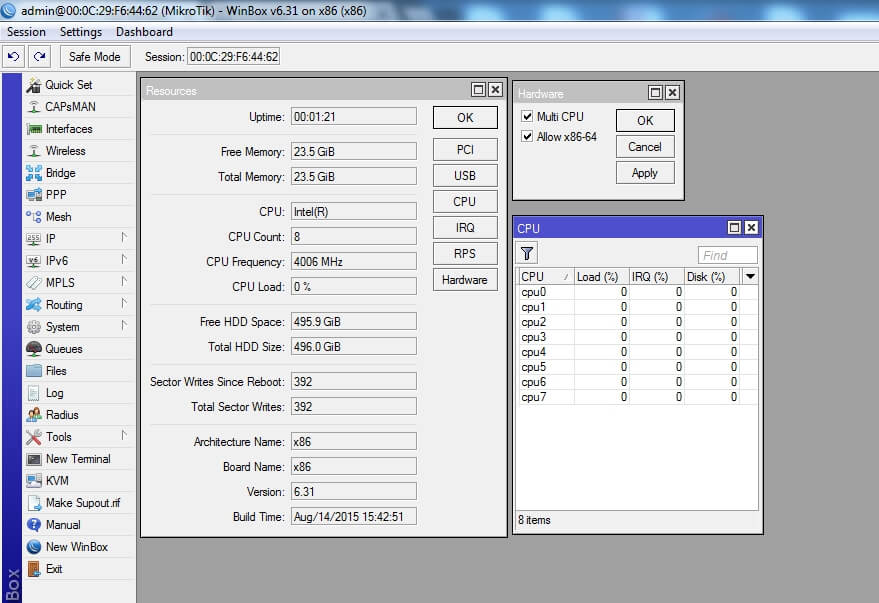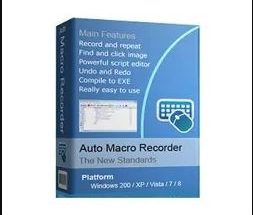MikroTik RouterOS Activation bypass + License Key Full Version Free Download

MikroTik RouterOS 7.11 Activation bypass is a standalone Linux-based operating system for PC-based routers and thin routers. No additional components are required, and no software is required. It is equipped with an easy-to-use yet powerful interface that allows network administrators to implement network structures and functions that would otherwise require lengthy training simply by following the reference manual (and even without it). MikroTik RouterOS turns an ordinary PC into a network router. Simply add standard network PC connections to expand your router’s capabilities.
MikroTik RouterOS Full Version turns an ordinary PC into a network router. Simply add standard network PC connections to expand your router’s capabilities. The manual describes the basic steps for installing and configuring a PC router equipped with MikroTik RouterOS. The following sections are included in this guide. This work was done specifically for the MikroTik Cloud Core Router CCR-1016G, which is described in more detail further down this page. However, this article is more about working with RouterOS 6.X and should be hardware independent.
It is an easily configurable operating system for dedicated routers. They use the company’s pavilion design software, which also has an x86 version. This allows you to easily configure your router. At the same time very flexibly configurable; all excess is removed; You must work as a router. Users using the company’s RouterBoard hardware devices need a way to boot them or just change router hardware from their computers. RouterOS represents the operating system of the MikroTik RouterBoard hardware and allows users to install it separately from their systems and turn them into fully functional routers.
Users can use various functions provided by the router, e.g. B. routing, firewall, bandwidth management, wireless access points and more. This allows them to use their computers as a gateway to a hotspot/VPN server or backhaul connection. Based on the Linux 3.3.5 kernel, RouterOS is a separate operating system that supports different configuration methods: local access via screen and keyboard, serial access with terminal applications, Telnet or secure SSH access to networks. The command-line interface allows you to perform configuration using script functions.
It provides a special configuration tool, “Winbox”, a powerful web-based application and an API programming interface that can be used to create custom control applications. MikroTik RouterOS supports several protocols including: For IPv4: RIPv1/RIPv2, OSFPv2 and BGPv4 and for IPv6: RIPng, OSFPv3 and BGP. In addition, virtual routing and forwarding (VFR), policy-based routing, interface-based routing, and ECMP routing are also supported. MikroTik RouterOS replaces your hardware router and offers more features at a fraction of the price.
Firewall, wireless, routing and VPN are just some of the features on offer. With the highest WiFi controller, you get the most impressive WiFi results and reach the greatest distance at the highest speed (e.g. 100 km connection with 5 Mbit or 35 Mbit connection with 57 km). It comes with a graphical Windows utility that allows you to configure it remotely.
Winbox is a small utility that enables MikroTik RouterOS to be deployed through a fast and simple user interface. It is a native Win32 binary, but works with Wine on Linux and macOS (OSX). All user interface functions are as close as possible to console functions, so there are no manual sections. Some complex and critical System Settings are not possible in MikroTik WinBox, such as changing the MAC address on protocol interfaces.
IPv6 connection is supported. In order to connect to the router’s IPv6 address, it must be enclosed in square brackets in the same way as in web browsers when connecting to an IPv6 server. Winbox Neighbor Discovery can now discover IPv6-capable routers. As shown in the figure below, each IPv6-capable router has two entries, one for an IPv4 address and one for a link-local IPv6 address.
It has an MDI interface, which means that all menu configuration windows (child windows) are connected to the main window (main window) and are visible in the workspace. By default, the application displays the most frequently used parameters. However, sometimes it is necessary to display other parameters such as “BGP AS Path” or other BGP attributes to monitor whether routes are selected correctly. It is possible to upload and download files to/from the router using win-box’s drag and drop function. You can also download files by right-clicking on them and selecting “Download”.
It can be used as a real-time traffic monitoring tool for any interface, queue or firewall rule. The following screenshot shows diagrams of Ethernet traffic monitoring.
Features & Highlights:
- Remote control with a simple live Windows application (WinBox)
- Telnet/Console/Serial Console Control
- Advanced bandwidth control
- Network firewall with packet filtering, masking, network address transfer, connection logging and monitoring
- DHCP support
- HotSpot technology
- Ethernet 10/100/1000 Mbit/s
- Wireless client and base station 2.4 GHz 11 Mbps
- 35 5 Mbps simultaneously with Frame Relay
- Asynchronous PPP/RADIUS (up to 32 ports) for modem groups
- Cyclades and LMC DS3 with E1/T1 support
- IP Phone Gateway
- Integrated web proxy
- Fixed: RB3011 RB3011 goes into reset loop when SFP module is present (introduced in v7.3);
- Fixed WPA3-PSK Wifiwave2 authentication incompatibility with certain device manufacturers and models
- exe is signed with the Extended Validation certificate issued by SIA Mikrotikls (MikroTik).
- WinBox uses ECSRP for key exchange and authentication (requires a new version of Winbox).
- Both parties verify that the other party knows the password (no “man-in-the-middle” attack).
- Winbox in RoMON mode requires the agent to have the latest version to connect to the latest version of routers.
- Winbox uses AES128-CBC-SHA as encryption algorithm (requires Winbox version 3.14 or later).
- Device Configuration: Provides comprehensive options for configuring network devices, including IP address, firewall settings, routing protocols, quality of service (QoS), and more.
- Monitoring and Analysis: The software provides real-time monitoring tools for tracking network performance, bandwidth usage, system resource usage, and network traffic analysis.
- Secure connection: Supports secure SSH connections and secure tunneling with IPsec, ensuring privacy and data integrity during remote management sessions.
- Scripting and automation: Network administrators can automate routine tasks with scripting in WinBox, simplifying network management operations and increasing efficiency.
- Traffic Control and Filtering: Includes powerful traffic shaping and filtering capabilities that allow administrators to prioritize specific traffic types, limit bandwidth usage, and enforce firewall rules.
Screenshots:

What’s New?
- *) API – does not allow execution of commands without mandatory parameters;
- *) bfd – added fixed values “actual-tx-interval” and “far-min-tx” (CLI only);
- *) bfd – better system stability;
- *) Bluetooth – added “decode-ad” command to decode raw Bluetooth payload (CLI only);
- *) Bluetooth – Added Peripherals section showing Eddystone TLM payloads and decoded interface, iBeacon and MikroTik Bluetooth;
- *) Bluetooth – added new AD structure type “Service Data” to Bluetooth notification;
- *) Bridge – added more logging related to STP;
- *) Bridge – added warning if there are non-bridge ports in VLAN interface list;
- *) Bridge – Fixed MAC learning on port “switch-cpu” with FastPath enabled;
- *) Bridge – Fixed MSTP BPDU Expiration;
- *) Bridge – fixed MSTP synchronization after disconnection;
- *) Bridge – prevents the formation of bridges on the VLAN interface created for the same bridge;
- *) Certificate – allows importing certificates with DNS name restrictions;
- *) Confirmation – PEM import fixed;
- *) Certificate – fixed Truststore CRL link when generated in older version (introduced in version 7.7);
- *) Commit – improved handling of CRL download retries;
- *) Confirmation – Remove prompt for “Password” feature on import;
- *) Confirmation – requires CRL to be present when using “crl-use=yes” option;
- *) Certificate – RSA restored with SHA512 support;
- *) conntrack – fixed feature “active-ipv4”;
- *) Console – sent “:convert” command;
- *) console – improved stability when canceling console actions;
- *) console – improved stability when using fullscreen editor;
- *) console – improved timeout for certain commands and menus;
- *) console – improved VPLS “cisco-id” argument validation;
- *) container – added IPv6 support for VETH interface;
- *) container – added option to use overlayfs layers;
- *) container – adjust the ownership of volume mounts that fall outside the container’s UID range;
- *) container – fixed duplicate image name;
- *) container – fixed IP address in container host file;
- *) defconf – do not change admin password if resetting with “keep-users=yes”;
- *) dhcp-server – fixed setting “bootp-lease-time=lease-time”;
- *) discovery – fixed “lldp-med-net-policy-vlan” (introduced in v7.8);
- *) dns – improved system stability when processing static DNS entries with specified address-list;
- *) ethernet – fixed forced half-duplex 10/100 Mbps link speeds on CRS312 device;
- *) ethernet – improved interface stability for CRS312 device;
- *) fetch – improved timeout detection;
- *) firewall – added warning when PCC divider argument is smaller than remainder;
- *) firewall – fixed mangle “mark-connection” with “passthrough=yes” rule for TCP RST packets;
- *) firewall – improved system stability when using “endpoint-independent-nat”;
- *) graphing – added paging support;
- *) health – added more gradual control over fans for CRS3xx, CRS5xx, CCR2xxx devices;
- *) health – fixed configuration export for “/system/health/settings” menu;
- *) hotspot – allow number as a first symbol in the Hotspot server DNS name;
- *) ike1 – fixed Phase 1 when using aggressive exchange mode (introduced in v7.10);
- *) ike2 – improved SA rekeying reply process;
- *) ike2 – improved system stability when closing phase1;
- *) ike2 – improved system stability when making configuration changes on active setup;
- *) ike2 – log “reply ignored” as non-debug log message;
- *) ipsec – fixed public key export (introduced in v7.10);
- *) ipsec – fixed signature authentication using secp521r1 certificate (introduced in v7.10);
- *) ipsec – improved IKE2 rekey process;
- *) ipsec – properly check ph2 approval validity when using IKE1 exchange mode;
- *) l3hw – changed minimal supported values for “neigh-discovery-interval” and “neigh-keepalive-interval” properties;
- *) l3hw – fixed /32 and /128 route offloading after nexthop change;
- *) l3hw – fixed incorrect source MAC usage for offloaded bonding interface;
- *) l3hw – improved system responsiveness during partial offloading;
- *) l3hw – improved system stability during IPv6 route offloading;
- *) l3hw – improved system stability;
- *) led – fixed manually configured user LED for RB2011;
- *) leds – blink red system-led when LTE is not connected to the network on D53 devices;
- *) leds – fixed system-led color for “GSM EGPRS” RAT on D53 devices;
- *) lora – added new EUI field;
- *) lora – added uplink message filtering option using NetID or JoinEUI;
- *) lora – moved LoRa service to IoT package;
- *) lora – properly apply configuration changes when multiple LoRa cards are used;
- *) lora – updated LoRa firmware for R11e-LR8, R11e-LR9 and R11e-LR2 cards;
- *) lte – added “at-chat” support for Dell DW5821e-eSIM modem;
- *) lte – added “at-chat” support for Dell DW5829 modem;
- *) lte – added “at-chat” support for Fibocom L850-GL modem;
- *) lte – added “at-chat” support for SIMCom 8202G modem;
- *) lte – added “band” info to the “monitor” command for MBIM modems that support serving cell info reporting over MBIM;
- *) lte – added extended support for Neoway N75 modem;
- *) lte – fixed Dell DW5221E “at-chat” support;
- *) lte – fixed LtAP mini default SIM slot “down” changeover to “up” after an upgrade (introduced in v7.10beta1);
- *) lte – fixed NR SINR reporting for Chateau 5G;
- *) lte – fixed R11e-LTE, R11e-LTE6 legacy 2G/3G RAT mode selection;
- *) lte – fixed Telit LE910C4 “at-chat” support;
- *) lte – improved initial interface startup time for SXT LTE 3-7;
- *) lte – improved system stability when changing the “radio” state for MBIM modems;
- *) lte – only listen to DHCP packets for LTE passtrough interface in auto mode when looking for the host;
- *) modem – added initial support for BG77 modem DFOTA firmware update;
- *) modem – changed Quectel EC25 portmap to expose DM (diag port), DM channel=0, GPS channel=1;
- *) modem – fixed missing sender’s last symbol in SMS inbox if the sender is an alphabetic string;
- *) mpls – improved MPLS TCP performance;
- *) mqtt – added more MQTT publish configuration options;
- *) mqtt – added new MQTT subscribe feature;
- *) netwatch – added “src-address” property;
- *) netwatch – changed “thr-tcp-conn-time” argument to time interval;
- *) ovpn – do not try to use the “bridge” setting from PPP/Profile, if the OVPN server is used in IP mode (introduced in v7.10);
- *) ovpn – fixed OVPN server peer-id negotiation;
- *) ovpn – fixed session-timeout when using UDP mode;
- *) ovpn – improved key renegotiation process;
- *) ovpn – include “connect-retry 1” and “reneg-sec” parameters into the OVPN configuration export file;
- *) ovpn – properly close OVPN session on the server when client gets disconnected;
- *) package – treat disabled packages as enabled during upgrade;
- *) poe – fixed missing PoE configuration section under specific conditions;
- *) poe-out – advertise LLDP power-mdi-long even if no power allocation was requested (introduced in v7.7);
- *) pppoe – fixed PPPoE client trying to establish connection when parent interface is inactive;
- *) profile – added “container” process classifier;
- *) profile – properly classify “console” related processes;
- *) qos-hw – keep VLAN priority in packets that are sent from CPU;
- *) quickset – correctly apply configuration when using “DHCP Server Range” property;
- *) resource – fixed erroneous CPU usage values;
- *) rose-storage – added “scsi-scan” command (CLI only);
- *) rose-storage – added disk stats for ramdisks;
- *) rose-storage – fixed RAID 0 creation;
- *) rose-storage – limit striped RAID element size to smallest disk size;
- *) route – added comment for BFD configuration (CLI only);
- *) route – convert BFD timers from milliseconds to microseconds after upgrade;
- *) routerboard – fixed “gpio-function” setting on RBM33G (“/system routerboard upgrade” required);
- *) routerboard – improved RouterBOOT stability for Alpine CPUs (“/system routerboard upgrade” required);
- *) routerboard – removed unnecessary serial port for netPower16P and hAP ax lite devices (“/system routerboard upgrade” required);
- *) routerboot – increased etherboot bootp timeout to 40s on MIPSBE and MMIPS devices (“/system routerboard upgrade” required);
- *) sfp – fixed incorrect optical SFP temperature readings (introduced in v7.10);
- *) sfp – improved interface stability for 98DX8208, 98DX8212, 98DX8332, 98DX3257, 98DX4310, 98DX8525, 98DX3255, 98PX1012 based switches;
- *) sfp – improved optical QSFP interface handling for 98DX8332, 98DX3257, 98DX4310, 98DX8525 switches;
- *) sfp – improved Q/SFP interface stability for 98DX8208, 98DX8212, 98DX8332, 98DX3257, 98DX4310, 98DX8525, 98DX3255, 98PX1012 switches;
- *) sfp – reduce CPU load due to SFP interface handling for CCR2116, CCR2216, CCR2004-12S+2XS, CRS312, CRS518 devices (introduced in v7.9)
- *) sms – increased wait time for modem startup;
- *) ssh – fixed host public key export (introduced in v7.9);
- *) ssh – fixed private key import (introduced in v7.9);
- *) ssh – fixed SSH key agreement on the client side when ed25519 used under server settings;
- *) ssh – fixed user RSA private key import;
- *) switch – fixed “reset-counters” for “switch-cpu”;
- *) switch – fixed BPDU packet processing on MT7621, MT7531 with HW offloaded vlan-filtering;
- *) switch – improved multicast packet forwarding on MT7621;
- *) system – disallow setting a non-existing CPU core number for system IRQ;
- *) system – increased maximum supported CPU core count to 512 on CHR and x86;
- *) system – reduced RAM usage for SMIPS devices;
- *) tftp – improved file name matching;
- *) user – added “sensitive” policy requirement for SSH key and certificate export;
- *) w60g – improved stability for Cube 60Pro ac and CubeSA 60Pro ac devices;
- *) webfig – added option to enable wide view in item list;
- *) webfig – fixed “Connect To” configuration changes for L2TP client;
- *) webfig – fixed gray-out italic font for entries after enable;
- *) webfig – use router time zone for date and time;
- *) wifiwave2 – added “steering” parameters and menu to set up and monitor AP neighbor groups (CLI only);
- *) wifiwave2 – added more information on roaming candidates to BSS transition management requests (802.11v) and neighbor report responses (802.11k);
- *) wifiwave2 – added option to filter frames captured by the sniffer command (CLI only);
- *) wifiwave2 – automatically add wifi interfaces to appropriate bridge VLAN when wireless clients with new VLAN IDs connect;
- *) wifiwave2 – changed default behavior for handling duplicate client MAC addresses, added settings for changing it (CLI only);
- *) wifiwave2 – enabled PMK caching with EAP authentication types;
- *) wifiwave2 – fixed “reg-info” information for several countries;
- *) wifiwave2 – fixed “security.sae-max-failure” rate not limiting authentications correctly in some cases;
- *) wifiwave2 – fixed clearing CAPsMAN Common Name when disabling “lock-to-caps-man”;
- *) wifiwave2 – fixed interface hangs on IPQ6010-based boards (introduced in v7.9);
- *) wifiwave2 – improved stability when changing interface settings;
- *) wifiwave2 – improved stability when receiving malformed WPA3-PSK authentication frames;
- *) wifiwave2 – make info log less verbose during client roaming (some info moved to wireless,debug log);
- *) wifiwave2 – rename “reg-info” country argument from “Macedonia” to “North Macedonia”;
- *) wifiwave2 – use correct status code when rejecting WPA3-PSK re-association;
- *) winbox – added missing status values for Ethernet and Cable Test;
- *) winbox – added warning about non-running probe due to “startup-delay”;
- *) winbox – fixed “Storm Rate” property under “Switch/Port” menu;
- *) winbox – fixed BGP affinity display;
- *) winbox – fixed default “Ingress Filtering” value under “Bridge” menu;
- *) winbox – improved supout.rif progress display;
- *) winbox – rename “Group Master” property to “Group Authority” under “Interface/VRRP” menu;
- *) wireguard – fixed peer connection using DNS name on IP change;
- *) wireguard – fixed peer IPv6 “allowed-address” usage;
- *) wireless – ignore EAPOL Logoff frames;
- *) x86 – updated e1000 driver;
- *) console – additional default value for “rndstr” command (16 characters 0-9a-zA-Z);
- *) Console – fixed wrong date when printing “List of Values” with multiple entries;
- *) Console – fixed thumbnail;
- *) Console – fixed missing “emo” for scripting tasks (introduced in v7.9);
- *) Console – fixed missing return value in ping command in some cases;
- *) Console – fixed print interval when changing terminals;
- *) Console – better ticket printing in certain menus;
- *) Console – better stability and responsiveness;
MikroTik RouterOS License Key:
- WERT6Y78W3UE9DIUCY76TXR5E4DRF
- AWSERT6Y7U8W9IEDOICUY7T6R5FTR
- SAWER5T6Y7U8I9EOFCUHYTR5DRFGR
- SWE4R5T6Y78U3I9EODIFCUY76TR5FTG
You May Also Like:

System Requirements:
- System: Windows 7 / Vista / 7/8/10
- RAM: Minimum 512 MB.
- HHD space: 100 MB or more.
- Processor:2 MHz or faster.
How to Install MikroTik RouterOS Activation bypass?
- Download the software and run the installation file.
- Click “I Agree” to continue.
- Select the installation method and click “Next”.
- Change the installation folder and click “Next”.
- Select the components and click Install to start the installation.
- After setup is complete, click Close.
- Done! Enjoy it.
Download Link
#MikroTik #RouterOS #Activation bypass #License #Key #Free #Download



